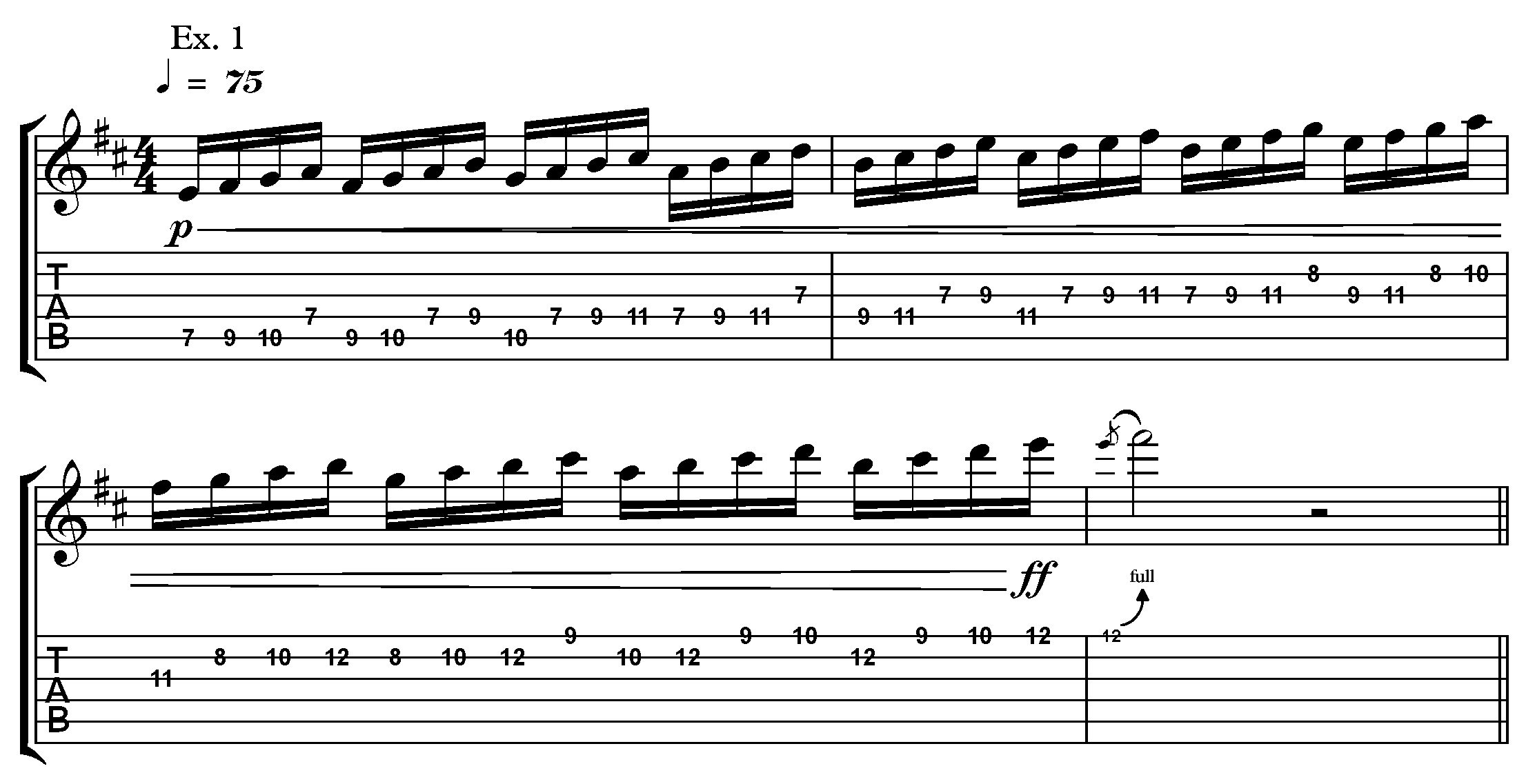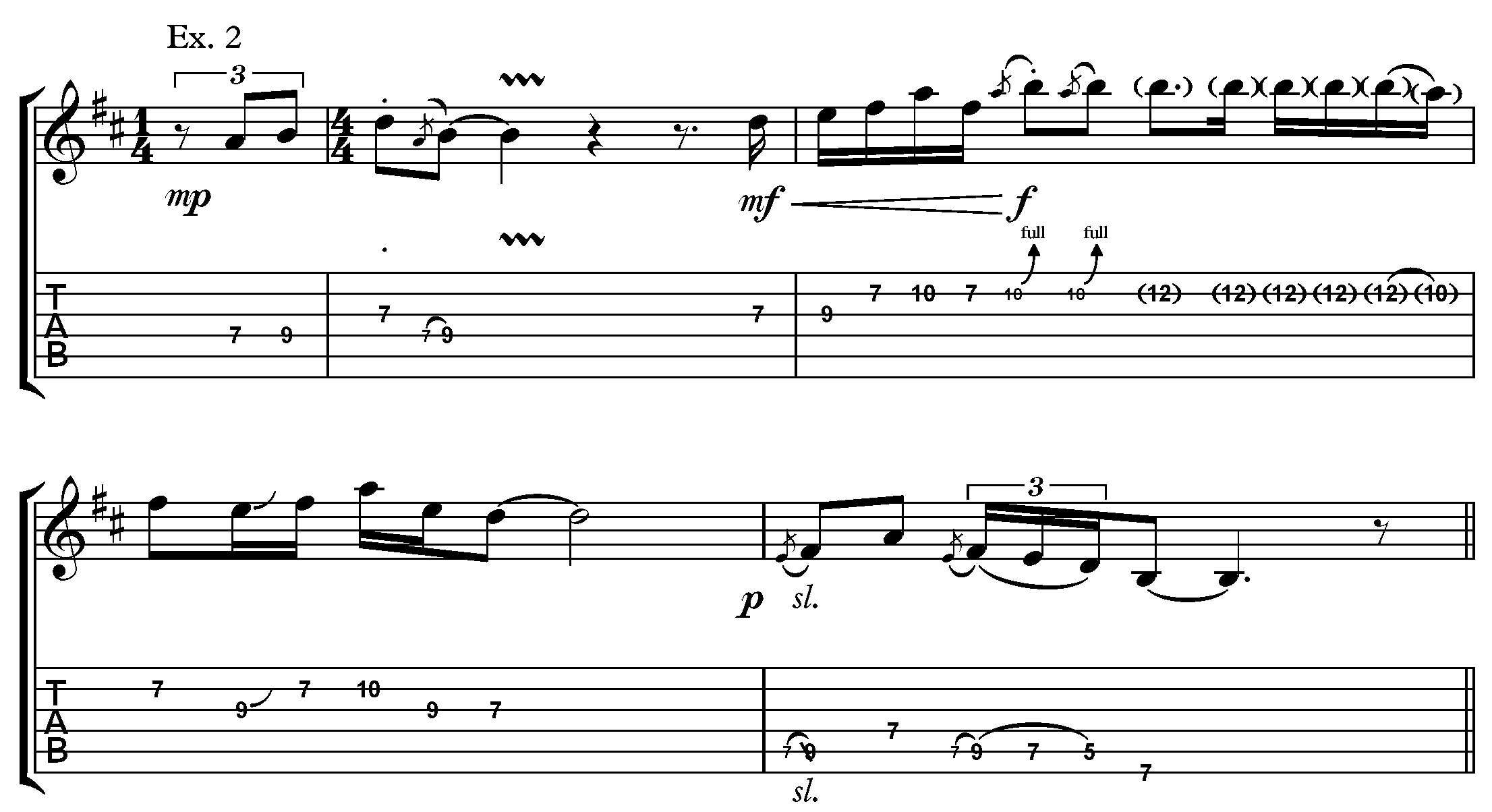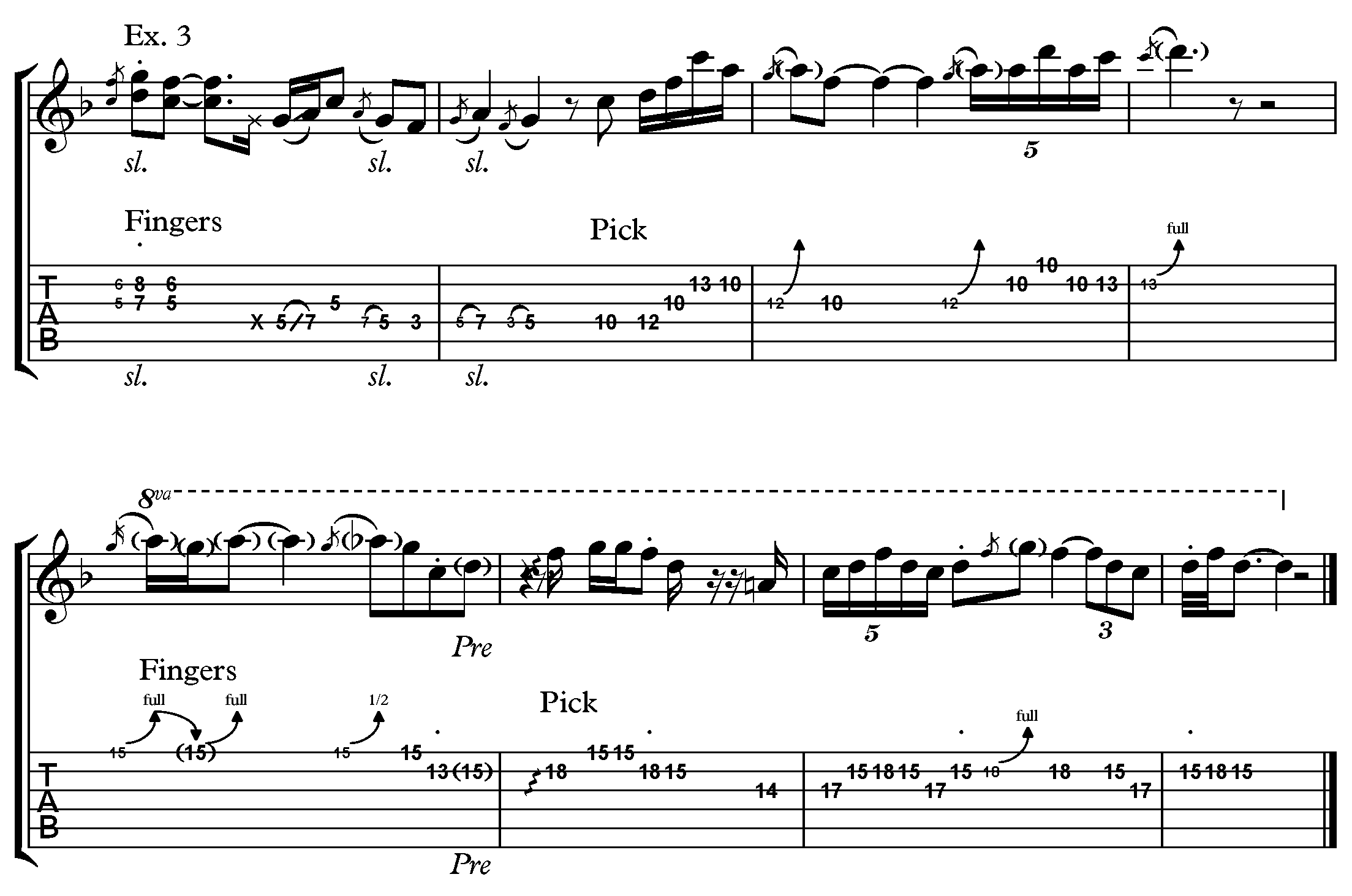Playing with Expression Part 4 – Playing with Dynamics
By Rob Thorpe
In our exploration of ways in which we can make our lead playing more expressive we’ve looked at at using vibrato, bending and grace notes. The aim of all these approaches is to subtly enhance your touch on existing melodic ideas rather than providing new licks.
In this column, I’m going to address a much underused attribute, but one that will bring your playing to life: dynamics. Playing with dynamics refers to the volume with which notes are played. In classical terms this ranges from piano to forte, or quiet to loud and will be notated with a small p or f in sheet music. When more extremes of volume are called for you can see pp or fff to illustrate even quieter or very loud.
When guitars were just acoustic instruments, players needed to be getting as much volume out of the guitar as possible in order to be heard in an ensemble but with amplification, one of the characteristics of the electric guitar is that it can respond to a very wide range of picking dynamics.
As well changing volume, you’ll notice how picking harder or softer changes the tone of the note that the guitar produces. Picking hard gives a brighter, twangy attack to a note whereas quiet dynamics also give more of a round, bassy response.
Furthermore, playing with dynamics can be used to adjust the amount of overdrive produced by the amp, particularly if you’re playing a valve amp, picking softly will cause the valves to provide less saturation and so give a cleaner sound.
Being able to control how loudly you play each note and varying the dynamic contour across a lick helps give your playing more of a vocal quality. When you hear someone talk in an engaging way, the pitch of their voice is moving up and down with each phrase, and so is the volume.
As guitarists, we don’t want to be talking in a ‘monotonous’ fashion as the audience will soon get bored and stop listening.
Example 1
Our first lick is a straightforward scale run in E dorian, but the main aim of the exercise is the addition of dynamics to build from soft to loud over the course of the phrase. You may be surprised how much you need to slow down in order to get it smooth and accurate while digging on for the loud notes.
To help keep the picking as consistent possible throughout, try to maintain the same movement, but lower the pick into the strings further to increase the sense of dynamics.

Example 2
These blues phrases provide a question and answer effect by using dynamics to contrast between the two ‘voices’. To draw an analogy, imagine an actor raising their voice to make a point, and then providing an after thought more quietly.

Example 3
I improvised this last example and changed between pick and fingers to vary the attack of each phrase. Using fingers to pluck instead of a pick gives a rounder sound as well as quieter dynamic. Mark Knopfler gets his superb lead guitar sound from using exclusively fingers.

Recommended Listening: Blues and rock guitarists are particularly good at playing with dynamics. To be expressive and individual with the limited palette of notes in the blues vocabulary means how you play an idea makes all the different. Check out legends like BB King, Gary Moore or Mark Knopfler, or more recent stars like Joe Bonamassa or the sublime slide playing of Derek Trucks.
“The artists you work with, and the quality of your work speaks for itself.”
Tommy Emmanuel
© Copyright Fundamental Changes Ltd 2025
No.6 The Pound, Ampney Crucis, England, GL7 5SA
